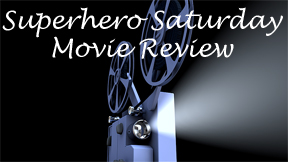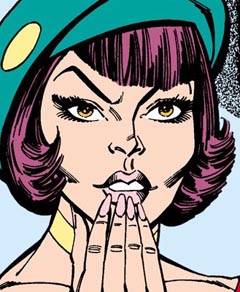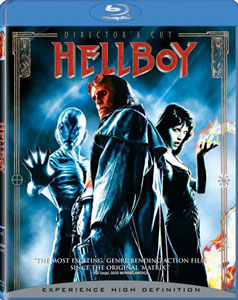Director/co-writer Guillermo del Toro and his team wonderfully bring Mike Mignola’s “Hellboy” comic book to the big screen in a 2004 film that has such top-shelf production design that it almost overshadows the story and characters. But not quite; Hellboy (Ron Perlman) is a likably gruff hero whose relationships with his adoptive father (John Hurt as Dr. Broom) and the woman he loves (Selma Blair as Liz) shine through.
An impressive look
That said, I admire the look of the movie — designed by Stephen Scott and his crew — above all. It’s in muted colors like the Dark Horse comic (1993-present), it has the drippy subway and sewer tunnels we also saw in del Toro’s “Blade II” (2002), it makes nice use of Lovecraftian monsters whose tentacles writhe from hell portals, and it’s also an interesting piece in the continuum of del Toro’s career.
The aquatic mutant Abe Sapien is clearly a visual precursor to the creature in “The Shape of Water” (2017), and both are played by Doug Jones. And the white-haired Broom looks like David Bradley’s Abraham Setrakian from “The Strain” (2014-17), and both are lifelong fighters against Nazi-bred monsters.

“Hellboy” (2004)
Director: Guillermo del Toro
Writers: Guillermo del Toro, Peter Briggs, Mike Mignola
Stars: Ron Perlman, Doug Jones, Selma Blair
If I’m being picky, the effects sometimes look a little too CG, as this came out in the transitional period between flawed and flawless computer-designed imagery. Overall, the action scenes are respectable, highlighted by “Indiana Jones”-style ancient underground traps in the closing act.
But – in addition to the production design – the Hellboy-Liz relationship stands out. I like how the devil-looking Hellboy is an old softie, probably because of how he was raised by the good-hearted Broom combined with the fact that he could use his giant right fist to smash anyone who gives him a hard time. A being from another dimension opened by Nazi paranormal scientists during World War II, Hellboy enjoys super-strength, slow aging and fireproof skin.
His kinship with Liz comes from being raised together in a secret government lab and the fact that they’re both freaks. But, as with the two types of mutants in “X-Men,” there are those who physically blend into society and those who stand out. Liz’s power is starting fires when she gets angry, but she looks normal. Blair’s sad, low-key performance melds nicely with Perlman’s quippy, brooding turn.
Insecure superhero
But one can understand why he thinks Liz will be drawn to the human agent John (Rupert Evans). A nice sequence finds Hellboy eating cookies brought to him by a young fan and spying from a rooftop on Liz and John, who drink coffee on a sidewalk bench.
It’s a cold night in New Jersey, and almost everyone else is indoors in this rundown neighborhood that they probably shouldn’t be out in, agent skills and superpowers aside. Yet there is a high school football game or something a block away. “Hellboy” often evokes this weird but transporting blend of the normal and the stylized.

The screenplay and editing could stand to be a little tighter. It might’ve been nice to see scenes of a young Hellboy and Liz together. Some threads and arcs peter out. The threat of creatures who can exponentially multiply is ended fairly easily (perhaps the four-season “The Strain” TV series was del Toro’s way to beef up the concept of a steadily growing plague). And the arc of Jeffrey Tambor’s secret agent Manning seems incomplete.
As much as I admire the design, the world of “Hellboy” isn’t a sunny and happy place to visit, and it’s rather straightforward in its comic-book trappings. But I won’t mind following Hellboy, Liz and John into the next entry (2008’s “The Golden Army,” a rare sequel to have a higher IMDB rating than the original).
For anyone intrigued by the design aesthetic of del Toro’s catalog and commonalities with his other famous works, “Hellboy” is a centerpiece entry.

